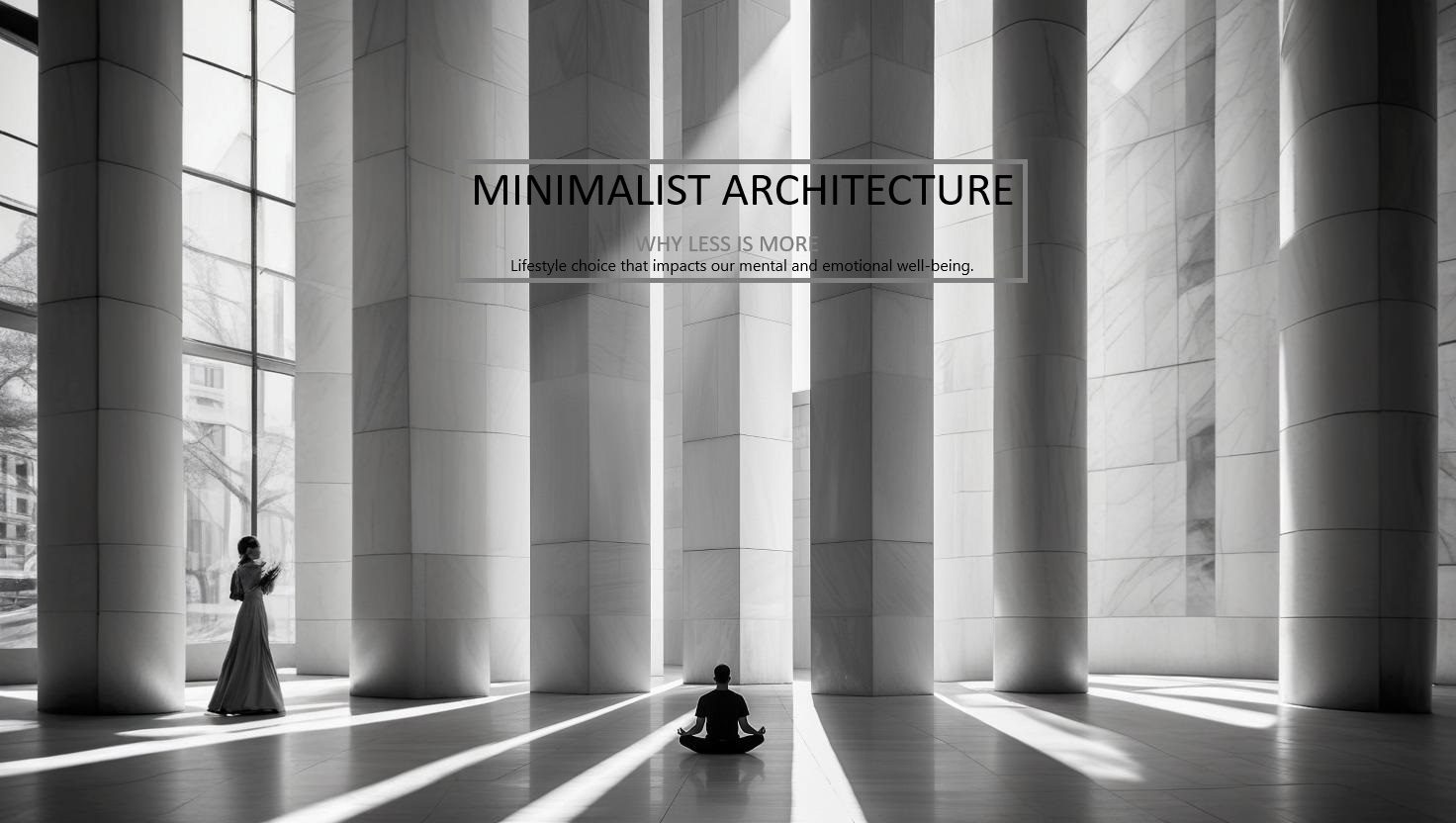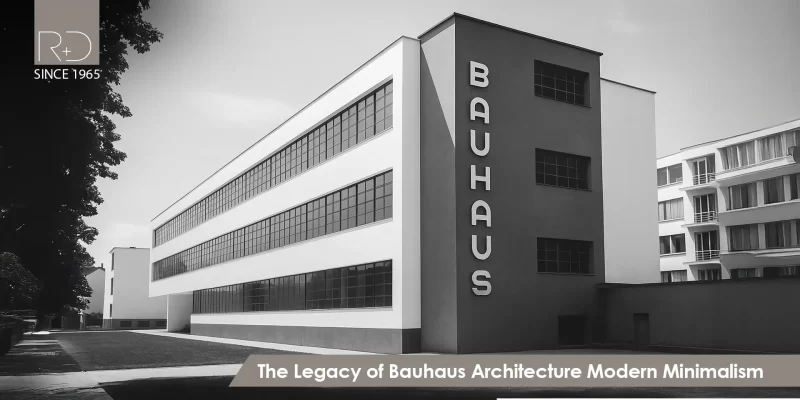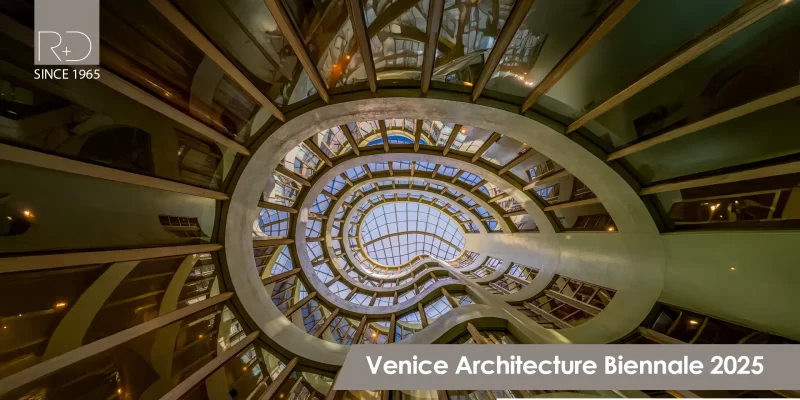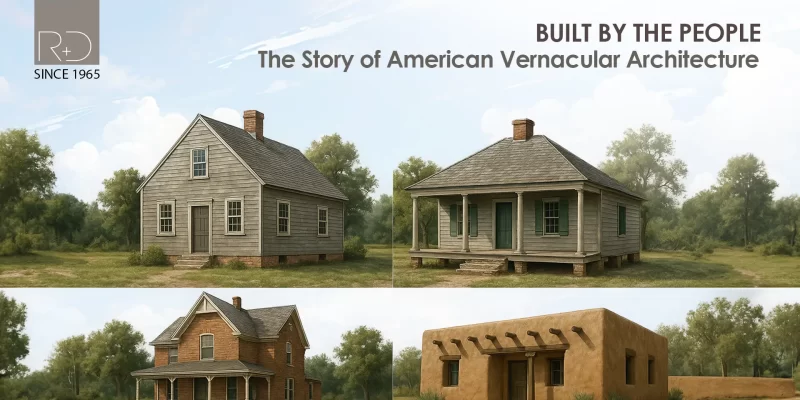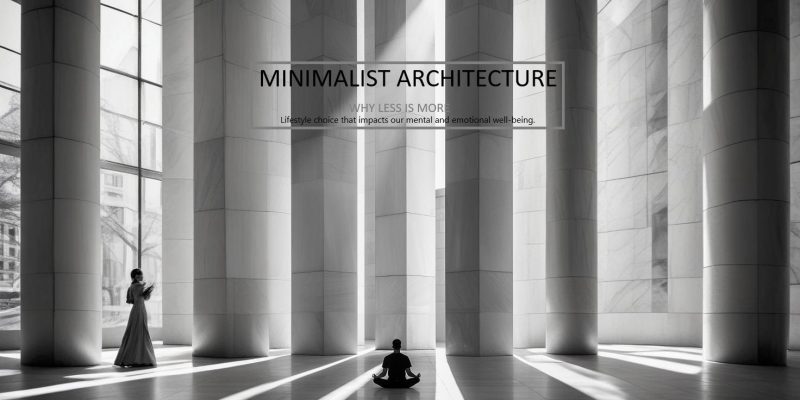Table of Contents
Spring is months away, and yet I’ve been obsessed with decluttering. My physical space has seen the brunt of my efforts, with closet clean-outs, book donations, and questions of “Does this spark joy?” dominating my weekends. And as gratifying as the efforts have been, I’ve realized that what’s really holding me back is the clutter taking up precious space in my mind. This realization led me to explore the concept of psychological minimalism a practice of simplifying thoughts, emotions, and mental habits to create space for clarity and purpose. By focusing on decluttering my internal world, I’ve started to uncover a sense of peace that even the tidiest home can’t replicate.
In a world filled with constant noise and clutter, minimalist architecture has emerged as a breath of fresh air. This design philosophy, rooted in the principle of “less is more,” is more than just an aesthetic trend—it’s a lifestyle choice that impacts our mental and emotional well-being. But what is it about minimalist architecture that resonates so deeply with us? Let’s explore the psychology behind minimalist architecture trend and why it’s becoming a go-to choice for homeowners and designers across the USA.
The Impact of Mental Clutter
Mental clutter can feel inescapable. The constant barrage of information creates a baseline of distraction that pulls our attention in countless directions. It often feels like my mind is a browser with too many tabs open—each one demanding immediate action. And it’s not just me: studies show that the average person checks their phone over 100 times a day, and a 2022 global Ipsos survey showed that nearly 60% of people report feeling overwhelmed by the demands of work and life. The result? Focus and productivity take a hit, and instead of moving through the day with purpose, we’re left reacting to whatever asks for our attention next.
This constant mental noise doesn’t just impact our efficiency—it’s a direct path to burnout. When our minds are crowded with commitments, worries, and distractions, it becomes harder to prioritize what truly matters. I’ve noticed that on my busiest days, when my to-do list feels endless and notifications pull me away from one task to the next, I end up accomplishing less than I hoped. Bonus: I feel drained by the end of it. Over time, this accumulation of unprocessed thoughts and unmet expectations creates a persistent sense of overwhelm. By recognizing this pattern, I’ve learned that clearing mental clutter isn’t just a nice idea. It’s essential for reclaiming our focus, energy, and well-being.
What is Minimalist Architecture?
Minimalist architecture is a design style that focuses on simplicity, functionality, and the use of clean lines. It strips away unnecessary elements, leaving only the essentials. Think open spaces, neutral color palettes, natural light, and a focus on quality over quantity.
This design philosophy is heavily influenced by famous Japanese architecture and the modernist movement of the 20th century. Architects like Tadao Ando and Kazuyo Sejima have mastered the art of minimalist design, creating spaces that are both functional and emotionally calming. Today, minimalist architecture is a trending topic in the USA, as more people seek calm, clutter-free environments in their homes and workspaces.
The Psychology of Minimalism: Why It Works
1. Reduces Mental Clutter
Our surroundings have a profound impact on our mental state. Cluttered spaces can lead to feelings of stress, anxiety, and overwhelm. Minimalist architecture, with its clean lines and uncluttered spaces, helps create a sense of order and calm. Studies have shown that people in minimalist environments report lower levels of stress and higher levels of focus.
2. Encourages Mindfulness
Minimalist architecture encourages us to live in the present moment. By eliminating distractions, it allows us to focus on what truly matters. This aligns with the principles of mindfulness, which emphasize being fully present and engaged in the here and now.
3. Promotes Emotional Well-Being
The use of natural materials, such as wood and stone, along with ample natural light, creates a warm and inviting atmosphere. These elements have been shown to boost mood and promote emotional well-being. Minimalist spaces often feel serene and uplifting, making them ideal for relaxation and rejuvenation.
4. Enhances Creativity
A clutter-free environment can do wonders for creativity. Minimalist architecture provides a blank canvas that allows the mind to wander and explore new ideas. This is why many creative professionals, such as artists and writers, prefer minimalist spaces.
How to Practice Psychological Minimalism
Step 1: Identify Your Mental Clutter
Begin by identifying the sources of mental clutter. These are the thoughts, worries, commitments, and obligations that regularly occupy your mind, leaving you feeling drained or overwhelmed. Take time to reflect on recurring stressors, whether it’s unfinished tasks, unresolved concerns, or emotional baggage.
Journaling can be a helpful exercise. Create a “mental clutter inventory” to take stock of what’s weighing on you. By recognizing these distractions, you can begin the process of decluttering your mind, just as you would declutter your physical space.
Step 2: Set Boundaries for Your Attention
In a world filled with endless notifications and constant distractions, it’s crucial to set clear boundaries for your attention. Start by limiting notifications on your phone and social media apps, reducing screen time, and designating specific times of day to check email or social media. Practicing the art of not responding to every message immediately can help you reclaim your focus and prevent mental clutter from accumulating. Embrace the idea that not everything requires an instant response, and that taking control of your attention is a key part of psychological minimalism. This boundary-setting allows you to direct your energy to what’s truly important, reducing feelings of overwhelm.
Step 3: Focus on What Truly Matters
A critical aspect of psychological minimalism is learning to focus on what truly matters in your life. Start by identifying your core values—those principles that resonate deeply with who you are and what you want to create in the world. Once these values are clear, use them as a guide to make decisions and prioritize your time. A helpful tool in this process is creating a personal mission statement or a daily “focus list” that serves as a reminder of your most important goals and responsibilities. By staying aligned with your values, you can make more intentional decisions and avoid getting distracted by non-essential tasks that only add to your mental clutter.
Step 4: Let Go of Mental Habits That Don’t Serve You
Much of the mental clutter we experience stems from ingrained habits and thought patterns that no longer serve us. Mindfulness can be a powerful tool in breaking free from these unproductive cycles. By practicing mindfulness, you become more aware of your thoughts and are better able to catch and release those that are negative, repetitive, or distracting. Developing routines that minimize decision fatigue—such as meal prepping, scheduling your day in advance, or sticking to a morning ritual—can also reduce mental clutter and create a sense of structure. These habits help you conserve mental energy and reduce stress, making room for more clarity and focus.
Step 5: Embrace Stillness and Downtime
Finally, psychological minimalism encourages you to embrace stillness and downtime as integral parts of a balanced life. In a culture that often equates productivity with busyness, it can be difficult to recognize the value of rest. Yet, quiet moments of introspection and relaxation are crucial for mental health and creativity. Activities like meditation, mindful walks, or simply sitting in silence without the distractions of devices can nurture a sense of peace and clarity. Reframe rest not as idle time, but as an essential practice for your well-being. By integrating these practices into your routine, you allow your mind the space to recharge and reset, ultimately fostering greater mental clarity and a more meaningful life.
How to Transition to a Minimalist Lifestyle
As we explore psychological minimalism, it’s impossible to ignore how deeply our society is shaped by consumerism, excessive consumption, and materialism. This hegemony can make it feel almost impossible to break free from the cycle of acquiring more and more, often without thought or intention. But the good news is, there are communities and resources that have emerged to help guide those seeking to adopt a minimalist mindset—not just in terms of possessions but also in how we approach our time, energy, and mental space.
If you’re looking to shift toward a more minimalist lifestyle, consider the concept of a “deliberation station”—a practice suggested by minimalism coaches to help us make more intentional decisions. Before you make your next purchase, ask yourself these questions:
- Have you thought about it for at least two weeks
- Does it solve a genuine problem that you’ve noticed?
- Do you already own something similar?
- Is buying it worth giving up progress towards your next financial goal?
- Would you still use the item in five years?Do you know if or where you can place it in your home?
- Will you have to work for a long time to pay for it?
- Can you be productive and happy without it?
- Is the cost per use worth it?
- Does buying it support your priorities?
- Is buying it the best way to obtain it?
- Is it a high-quality item with a reasonable price tag?
- Is your mental state calm and neutral right now, or influenced by internal or external forces?
- Would the purchase be driven by intention or impulsivity?
If your answers tend to lean more negative than positive, this could be a sign that the item won’t serve you or your space. Consistently applying this framework will not only help you curate a more intentional and minimalist living space but will also empower you to make decisions that align with your values and long-term goals. Minimalism, in this context, isn’t just about the physical act of decluttering it’s about aligning your possessions with your deeper purpose and freeing up mental space to focus on what truly matters.
Key Elements of Minimalist Architecture
To truly understand the psychology behind minimalist architecture, it’s important to look at its key elements:
1. Simplicity: Clean lines, geometric shapes, and a focus on functionality.
2. Neutral Color Palettes: Whites, grays, and earth tones dominate minimalist spaces.
3. Natural Light: Large windows and open spaces allow for maximum light penetration.
4. Open Floor Plans: Fewer walls create a sense of spaciousness and freedom.
5. Quality Over Quantity: Minimalist architecture prioritizes high-quality materials and craftsmanship.
Pro Tip: Look to famous Japanese architects like Shigeru Ban and Kengo Kuma for inspiration. Their work exemplifies the timeless appeal of minimalist design.
Why Minimalist Architecture is Trending in the USA
Minimalist architecture is more than just a design trend it’s a reflection of our evolving lifestyles. Here’s why it’s gaining popularity in the USA:
1. Sustainability: Minimalism aligns with the growing demand for eco-friendly and sustainable living.
2. Urban Living: As urban spaces become smaller, minimalist design offers practical solutions for maximizing space.
3. Mental Health Awareness: With increasing awareness of mental health, people are turning to minimalist spaces to create calming environments.
4. Timeless Appeal: Minimalist architecture never goes out of style, making it a smart investment for homeowners.
Pro Tip: Explore famous Japan architecture and famous Japanese architecture to see how minimalist design has influenced global trends.
How to Incorporate Minimalist Architecture into Your Home design
Interested in extreme minimalist home architecture? Here are some tips to get started:
1. Declutter: Remove unnecessary items and focus on keeping only what you truly need.
2. Choose Neutral Colors: Stick to a neutral color palette to create a calming atmosphere.
3. Maximize Natural Light: Use sheer curtains or no curtains at all to let in as much light as possible.
4. Invest in Quality Furniture: Opt for functional, high-quality pieces that serve a purpose.
5. Embrace Open Spaces: Avoid overcrowding your rooms and leave plenty of open space.
Pro Tip: For those interested in extreme minimalist living, start small by focusing on one room and gradually expand to the rest of your home.
Conclusion: The Power of Minimalist Architecture
Minimalist architecture is more than just a design trend it’s a way of life that promotes mental clarity, emotional well-being, and a deeper connection to our surroundings. By embracing simplicity and functionality, we can create spaces that not only look beautiful but also feel good to live in.
Whether you’re designing a new home or simply looking to declutter your current space, minimalist architecture offers a timeless solution that’s both practical and psychologically rewarding.
Ready to transform your space? Start by decluttering one room at a time and see how it impacts your mood and productivity.
